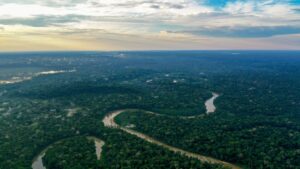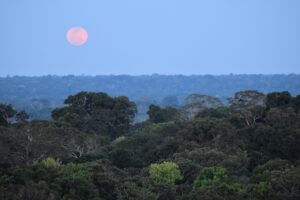Peru Recognizes Los Amigos Conservation Area at 2022 COP15
January 27, 2023
At 2022’s COP15 (the United Nations Biodiversity Conference of the Parties to the UN Convention on Biological Diversity) in Montreal, Peru announced the recognition of Los Amigos Conservation Concession as its first of two Other Effective Area-Based Conservation Measures (OECM), as part of Peru’s efforts to meet the goal set by the Biological Diversity Agreement to conserve 30% of the territories on the planet by 2030 and to formally acknowledge the significant progress that Los Amigos has made in conserving such an ecologically important natural area.

OECMs are areas that are achieving the long-term and effective conservation of biodiversity outside of otherwise designated protected areas and are defined by the Convention on Biodiversity (CBD) as:
A geographically defined area other than a Protected Area, which is governed and managed in ways that achieve positive and sustained long-term outcomes for the in-situ conservation of biodiversity, with associated ecosystem functions and services and where applicable, cultural, spiritual, socioeconomic, and other locally relevant values.
This honorable recognition of Los Amigos as an OECM increases its visibility as an important site for conservation outside of the National System of Protected Areas by the State (SINANPE), the Peruvian national parks system, while not requiring it to be managed, governed, and integrated into the national parks system.
When Los Amigos was established in 2001, it was the first private conservation concession in the world. Located in the Los Amigos watershed in the department of Madre de Dios in southwestern Peru, the 360,000-acre concession borders the world-famous Manu National Park, and is a mosaic of terrestrial and aquatic habitats, including old-growth Amazonian forest, palm swamps, and bamboo thickets. Wildlife is abundant, including 12 globally threatened species, 11 primate species, and over 550 bird species.

Since its establishment, scientists and researchers have conducted studies at the station addressing botany, conservation biology, geology, hydrology, and zoology, among others. Additionally, many field courses have been held at the station with students from Peru and around the world.
We are incredibly proud to see this key site for conservation grow in size and stature and with it the field of conservation itself.

